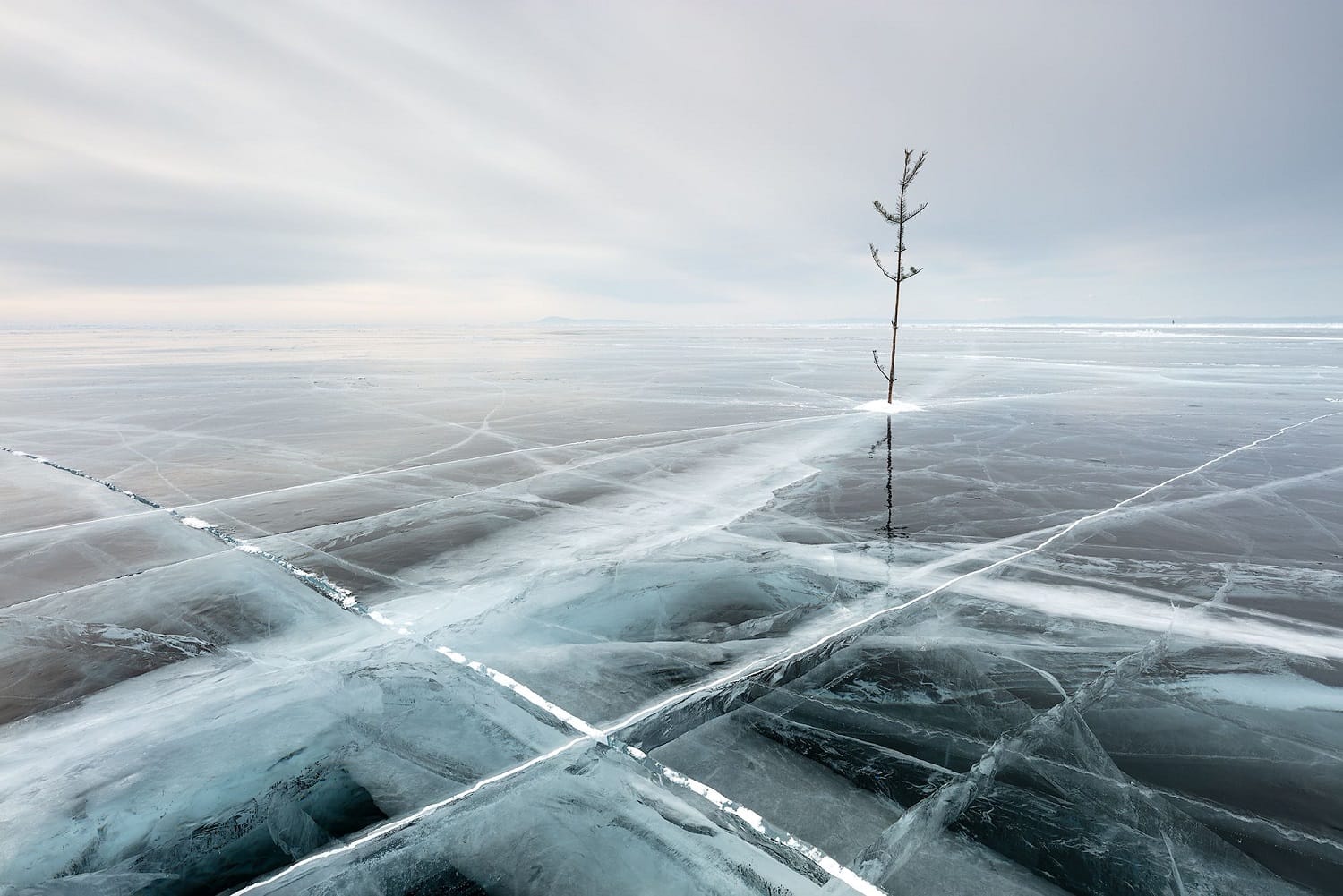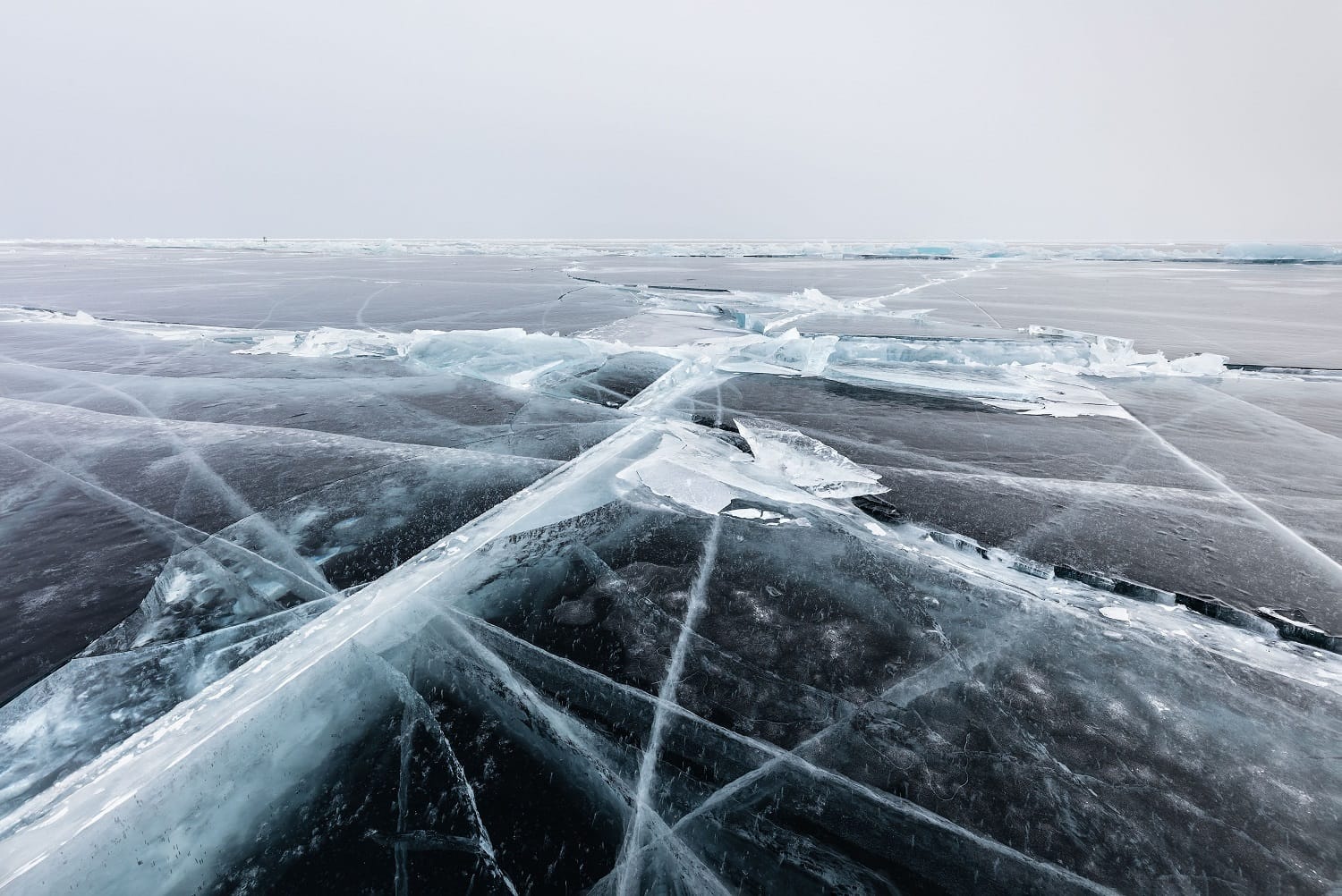What’s the best way to tell area residents about plans for a new asylum shelter nearby?
The government should tell communities directly about plans for new asylum shelters, some activists and politicians say.
Artist Daragh Muldowney found that rapid climate change is transforming Lake Baikal and the traditions of communities who live on its shores.

As recently as November 2017, Daragh Muldowney had never heard of Lake Baikal in southern Siberia.
By the end of that month though, five people unconnected to each other had mentioned the world’s largest, by volume, freshwater lake or sent him links, the artist says.
“I don’t know whether the Lake Baikal tourist board was trying to push it,” says Muldowney with a smile, over Zoom.
At the time, he was looking for a new project — a story to tell in photographs.
He booked a trip and by February the following year, he was walking across its vast frozen surface, in -35 degrees, with the ice crackling melodically around him.
There are hazards on the lake. “When it’s quite unstable and there is a lot of movement, the ice can come apart or it can come together creating massive jagged pieces of ice called hummocks,” he says.
The ice hummocks rise like large stalagmites from the ice.
But locals have a system to guide them safely across, he says. They drill a hole in the ice and place pine trees to mark their route, like beacons on a frozen desert.
That tradition and the local ways of life are under threat from environmental factors including climate change, he says.
Beacons is Muldowney’s new exhibition launching in February and a fine art photography book by the same name.
Travelling across the lake in a military-issue Russian tank, which looks somewhat like an old Volkswagen campervan, Muldowney got into a few scrapes.
On his first trip, the tank went up in flames, he says.
It sunk into snow and the driver kept revving the engine — until the driver saw smoke coming out of it, says Muldowney.
By the time Muldowney got there, the van was on fire.
A guide had managed to get his camera and gear out of the van but not his tripods.
He braved the flames to grab the tripods. Then he got well back, he says, and took photos on his phone.
Several flammable items exploded, he says. “I lost a couple of bottles of vodka. There was a jerry can on the roof.”
Stuck for several hours at -25 degrees, they were eventually rescued by staff from a local weather station around 15km away, he says.
After that trip, he came back for a private tour because he wanted to be in the trees for sunrise and sunset.
That meant travelling back at dusk though.

“One night we did lose the trees,” he says. “It was actually after sunset, after shooting these particular trees,” he says, gesturing to the photo entitled Sanctuary in the exhibition.
Once the light dims, it’s easy to lose sight of the pine trees. Then, it is like navigating your way through a maze of hummocks and it is dangerous, he says.
“It is amazing how much sanctuary you feel when you have the road system to guide you,” he says. “Then when you don’t, when you lose it, it’s amazing how vulnerable you feel.”
It is like a metaphor for life, he says. You can feel scared and disconcerted when you lose your way, but “to find your way back to what you believe to be your right path, there is a sanctuary in that”.
In Breathe, the cloudy sky, dark grey and blue, reflects on the ice around a sparse pine branch.
It is a lonely place out there on the ice, says Muldowney. But he loves the brightness and the expanse.
“It is like being in the desert in some ways or out at sea, you are getting full skies,” he says. “There is a sense of freedom being there.”
In other photos, the cracks in the ice form designs.
He started Dúlra Photography in 2003 and his work focuses, as the Irish name suggests, on nature and the elements.
Muldowney says he drops into an almost trance-like state when he connects with nature.
You get a feel-good factor from being in nature, whether that is walking on the beach, climbing mountains or swimming in the sea, he says.
“If you actively meditate on that and give back energy and give thanks and love towards what you are seeing,” he says. “There is healing in that.”
He tries to be in that state of being to take the photos. “I hope people get some sense of that.”
“Everything is in transition, evidence of rapid climate change in the region is now abundant,” says Muldowney, reading from a book.
“Water temperatures in the lake have increased dramatically over the last few years and a fragile ecosystem is now severely under threat,” he says.

The locals use the lake to visit neighbouring communities. In summer, they don’t meet each other as much because it is so far to drive around.
Milder winters mean that each year there are fewer days on which they can travel. “Distancing communities once connected by the ice,” he says.
“The traditional and ancient ice roads may become a folk memory in the not too distant future,” he says.
He saw a similar pattern in Greenland, which he photographed for a previous project.
“The warming of the planet is making their winters shorter,” he says.
Local people used to travel in dog sleighs to get around in winter, but those winters are shortening so they use boats more of the time.
That requires fuel and costs money that many don’t have, he says.
On his last visit, he discovered that the government had introduced new rules too to stop people cutting the trees, so the locals have switched to using flag poles to mark the route.
He photographed those too for the exhibition.
The conservation measures may protect the forests and the fish but not the people who relied on fishing and forestry to live.
“It is quite a sad story for some of the local people around there,” he says. “A lot of these communities are decimated as people have to move away to cities to work.”
The Beacons exhibition will be on display at the Copperhouse Gallery from 17 February. It can be viewed online initially with virtual tours and will open to the public in the gallery if restrictions are eased.
Get our latest headlines in one of them, and recommendations for things to do in Dublin in the other.